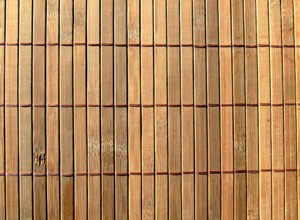
Story: Catherine Stewart
Screens will divide your garden into separate areas, block ugly views of bins and sheds, cover up old fences you can’t change, frame vistas or even create a focal point in themselves. Unlike a solid wall, a screen, with its partial transparency, keeps a real sense of what is beyond and links the two spaces together while it also divides them.
The function
While you might want some privacy or to hide something completely, you also need to remember about breezeways and shading. A high, solid screen can block cooling summer breezes and create turbulent air on its leeside as well as make very long winter shadows that might rob you of some precious warmth and sunlight. You might be surprised at how little visual barrier is actually needed for a feeling of privacy and separation. Think about louvred, slatted, woven and mesh screening instead of masonry, stone and wood.
Here or there?
Sometimes the screen should be the star and sometimes it needs to be a background. Dark and neutral colours and open screens recede and lead the eye to the view beyond. Light or bright-coloured screens come forward and distract us from what is behind, even when you can actually see through them.
Material choice
Material selection is not just to do with the visual but also about site constraints (such as steeply sloping or uneven ground), access, wind load, maintenance and whether the screen is to be curved or straight.
Timber seems to fit in with most gardens and can be easily cut and shaped on site (which works better for steep slopes). Rather than traditional palings, or pre-made lattice panels, use timber as horizontal slats or create a real original with unusual shapes, cut-outs and decorative painting. Timber needs regular painting or preserving. Some pine products are prone to warping with age and timber is not advisable in fire-prone areas.
Modwood is a pre-coloured timber substitute made from recycled wood and plastics. It makes a great, no-maintenance horizontal slatted screen.
Aluminium doesn’t rust and can be formed and pre-painted to look like lots of other materials such as timber and bamboo, often as a coating over a mod-wood base. While it can be dented by hail (or a well-aimed cricket ball!), aluminium is low-maintenance. Look for woven mesh, lattice, fixed and opening louvres and fantastic sculptural forms.
Steel is used as panels or slats, laser cut into beautiful screens that become works of art in themselves or cast and welded into ornate panelled screens. Even layers of offset reinforcing mesh can be used. Steel needs to be galvanised, stainless, powder-coated or regularly painted for rust protection, though allowing it to rust can also be part of the look.
Glass can be tempered and reinforced for landscape use. Etched glass catches the light superbly and newer techniques of encapsulating photo images within laminated glass can be made with variable transparency levels.
Bamboo and reed can hide those bins in no time flat. Used as a fence or screen, they give good privacy while still allowing some air movement.
Stainless steel cables networked into any pattern (even shaped like a large spider’s web) can be either a screen in themselves or covered with a light, twining vine such as Muehlenbeckia to make a “green screen”.
Other options
Reusing old materials makes screens that are quirky and highly individual. Discarded tools and household objects, old aluminium screen doors, wrought-iron balustrading or restrung beaded curtains all make unique screen sculptures.
Branches can be stacked and “woven” between uprights to form a natural and very eclectic screen or leaves collected between vertical panels of fine wire mesh. Or water running between two framed glass panels makes a stunning water feature that can double as a screen or disguise a drab fence.
Of course, another option is to plant a row of shrubs or trees. Shrubs trimmed into hedges can divide and screen various zones within the garden, while trees can provide privacy if planted along the boundary lines of a property.
Screening plants
When it comes to selecting a screening plant, start by walking around the local streets to see what does well in your area. Try to collate a list of possibilities and then discuss these with someone who really knows their plants. There are so many good screening plants, however, that it often comes down to a matter of choosing the one that has the most personal appeal.
Here are some suggestions for hedge plants:
Short growers
Abelia is an underrated shrub that produces masses of white bell flowers in the warmer months. It grows to about 1.5m.
Grevillea ‘Robyn Gordon’ is one of the best. It grows to about 1.2m and produces red flower clusters year-round.
Medium growers
Murraya (Murraya paniculata) has shiny green leaves with lighter new growth and waves of white, perfumed flowers in spring, summer and autumn (especially after rain).
Pittosporum tenuifolium varieties have light-coloured foliage on dark stems. These must have well-drained soil.
Tall growers
Lilly pillies are available in myriad forms. There are also some dwarf varieties.
Native frangipani (Hymenosporum flavum) is an upright tree with glossy leaves and white to cream perfumed flowers in spring.



